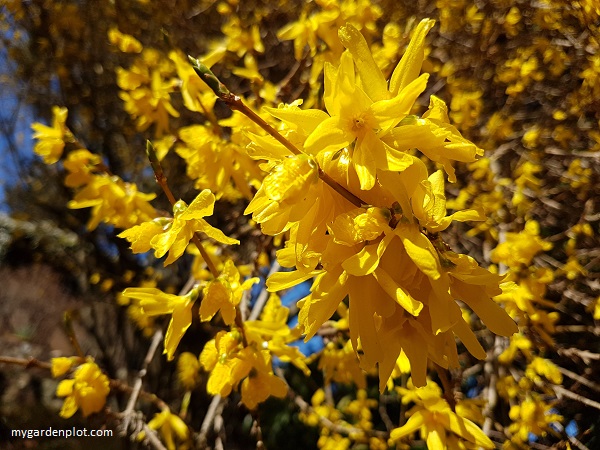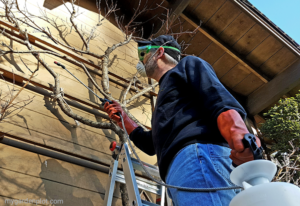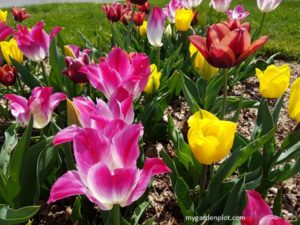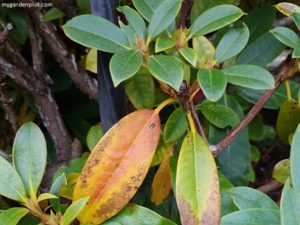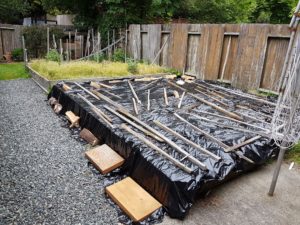Gardening Checklist For March In The Pacific Northwest
Early spring is an exciting time. Nothing draws us outside faster than the prospect of the awakening in the garden. Forget spring break, the garden beckons, and this is a time to start. Our planning begins with a gardening checklist for March. In some regions, the prospect of spring may begin later than March, and other lucky places maybe earlier. Here on British Columbia’s coast, it can still be somewhat unpredictable, though the hint of spring is there with warmer nights and longer days. Gardeners know that the change means we need to get out there, start spring maintenance and prep the garden. Here is a list of what to do in the garden in early spring on the coast and regions where the snow has melted away.
Spring is a delightful time when you begin to see again the swathe of colour emerging in the garden. Spring bulbs like crocus and lily of the valley and early flowering shrubs and trees will start showing off their splendour. Some of our favourites include forsythia, flowering quince, camellia, and star magnolia, and of course, the masses of white flowers from the evergreen clematis.
What To Do In The Garden Early Spring
- Finish clearing beds by removing old leaves, bits of wood and general garden debris.
- Keep on removing those weeds from flower beds.
- Hunt for slugs, snails and bugs that may be feeding on new growth.
- Continue or start indoor seeding of tender annuals.
- Begin the process of hardening off young plants to be planted out next month.
- Support peonies or other plants that need staking before this fill in.
- Apply a layer of compost or organic mulch. Keep away from touching the base of stems and trunks.
- Where needed, mix slow-release fertilizer into soil or compost.
- Bring potted plants out from where they were sheltering during winter.
- Start planting summer and autumn bulbs, like Nerine bowdenii.
- Where necessary, divide and transplant overcrowded perennial clumps, like snowdrops and lilies – plant immediately to re-establish.
- Early spring is an excellent time to plant new perennials, shrubs, trees and vines – some will be already blooming like evergreen clematis.
RELATED TOPIC: How To Manage Garden Pests And Diseases
Early Spring Pruning And Maintenance
- Continue or start cutting back old perennial stems left during winter, such as with western maidenhair fern.
- Late-flowering shrubs, like some hydrangeas and Daboecia cantabrica, should be pruned or sheared.
- Start planning to prune your roses as soon as young shoots start to develop.
- Tackle those overgrown climbers by taking out some of the thickest older stems from the base.
- Continue to remove any winter-damaged branches from trees and shrubs.
- Prune out diseased or dead stems from shrubs and trees.
- Once hedges start showing some spring growth, it’s time to prune – always prune the sides at a slight angle where it is narrower at the top than the bottom.
RELATED TOPIC: Buyer’s Guide How To Choose Garden Hand Pruners (Secateurs)
Early Spring Lawn Care
- If the ground is still very soggy, continue to keep off the lawn and wait awhile.
- Mow the lawn when it is over 8 cm (3 in) high if weather permits.
- Edge uneven lawn lines and aerate your lawns.
- Rake out dead moss and apply dolomite lime.
- Fertilize your lawn to encourage root growth.
- Overseed bare spots or worn out patches in the lawn.
- This is an excellent time to lay turf for a new lawn. Try to complete early springtime.
RELATED TOPIC: Lawn And Grass Care Guide
Kitchen Garden In Early Spring
- Remove any last seasons’ mulch or straw to warm up the soil.
- Keep those weeds out of the kitchen garden.
- Condition your soil with fertilizers and organic compost before sowing and planting.
- Sow seeds of warm-weather vegetables and herbs indoors, tomatoes, zucchinis and basil.
- Young plants to be planted out next month should be hardened off soon.
- Start sowing radishes, parsley and other veggies, such as green onions, leeks, and parsnips.
- Plant bare-root fruit shrubs and trees now while they are still dormant.

